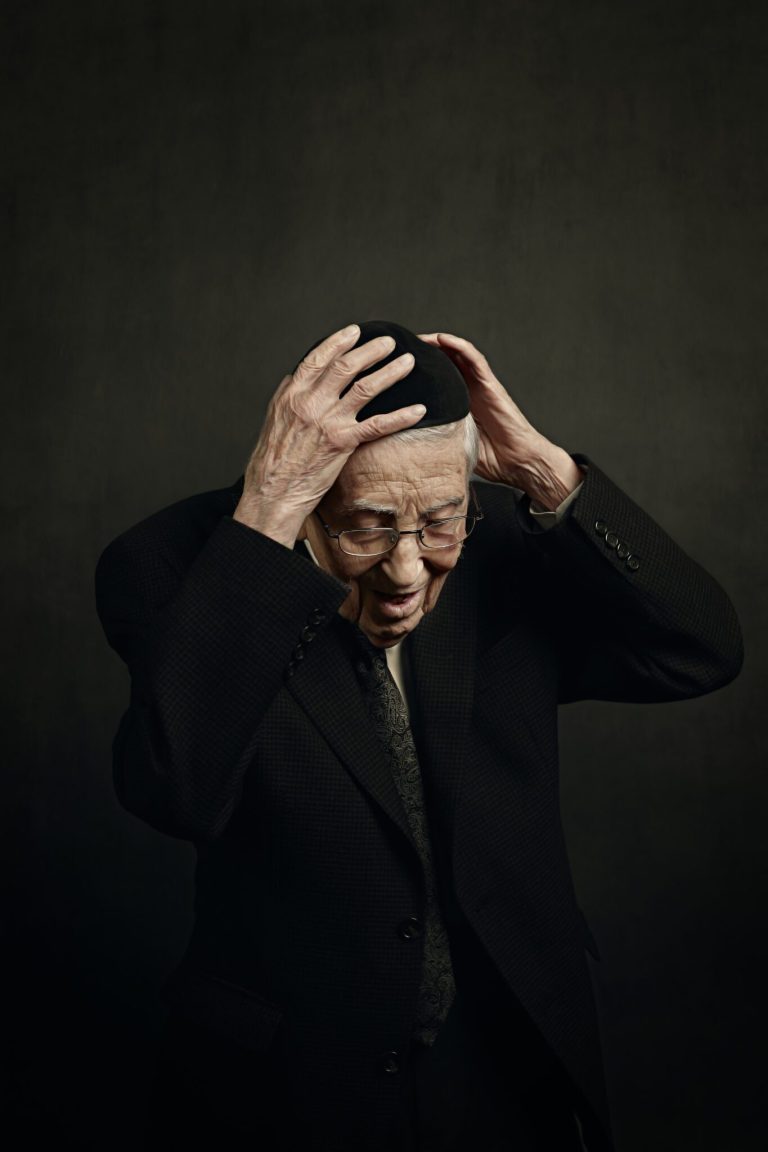
The Sid Jacobson Jewish Community Center unveiled a new photography exhibit by Daniel Weiss that includes portraits of 18 local Holocaust survivors, to memorialize their stories and educate the community.
The gallery, which was produced by Dinah Kramer, will be on display at the center through June. The project began in 2017 and was completed in 2020. It was first displayed in January 2020.
Weiss said the progression of developing the exhibit was evolutionary, meaning it changed throughout the process of its creation.
The idea was founded when Weiss’ son was going through the bar mitzvah process. A part of that process is listening to a Holocaust survivor share their story, with his son listening to Irving Roth’s story.
Weiss, who sees himself as a protective father, said he was initially concerned about his young son learning about the atrocities of the Holocaust, what he referred to as “the stuff of nightmares.”
But Weiss said he could not have been more wrong about the effects of listening to such a story.
He said Roth was a very dynamic speaker who exuded incredible energy and framed his storytelling more so as a celebration of life and perseverance during the Holocaust. As Weiss listened to his story, he said he was drawn to create a portrait of the man and show he was.
“What I left that hour feeling about him, this was a gentleman who was certainly a Holocaust survivor, but he managed to not only survive – he thrived,” Weiss said. “He didn’t allow this moment, this horrific moment in his life, to hold him back, to completely define who he was.”
But what started as wanting to make a single portrait of Roth transformed and grew into a collection of 17 portraits featuring 18 Holocaust survivors, one portrait including two survivors who were cousins.
Weiss said focusing on that exact number of survivors was intentional as 18 is a significant number in Judaism. He said it was Kramer’s idea to strive for this number.
In Hebrew, the letters “chet,” which represents the number eight, and “yud,” which represents the number 10, can be added together which creates “chai,” representing the number 18. The Hebrew word “chai” means life, which can be found in common expressions like “L’Chaim” which means “to life.”
The number 18 represents the idea of life and is a special number within Judaism. This is why Weiss and Kramer sought out 18 Holocaust survivors to honor their lives.
At the beginning of the process, Weiss said he wasn’t sure how to make distinct and meaningful portraits for each individual survivor.
He started by asking them questions about their lives and their experiences, but his approach evolved to become more conversational with each survivor he spoke with.
Many of his portraits show the intimacy he fostered through conversational relationships with his subject.
One of his portrait subjects was 92 years old when her photo was taken, and drove herself to the photo session. Weiss described her as a fiery personality who loved to tell raunchy jokes and relished in his discomfort. He said that her personality translates in her portrait where she has the largest smile with her arms wide open, representing a woman who survived through humor.

Other portraits include one survivor fixing his yamalka, representing his reliance on his faith to survive the Holocaust, and one woman clutching her bag, symbolizing the moments many families experienced when they were rushed out of their homes and only allowed what they could gather and carry in those brief moments.
Weiss said that the journey of conducting this exhibit was a learning experience for him, listening to the diverse stories of Holocaust survivors. He said the conversations he had with them were inspiring and heart-warming.
He said ten of the photographed survivors have died since the project began, which Weiss said has made the project all that more important to preserve their stories and continue sharing them.
Weiss said that this exhibit is also important as a way to address recent spikes in antisemitism. He said the gallery educates people which he said is imperative to fight hatred.
While the exhibit is on display, Weiss said it is not complete. He said he and Kramer are continuing the project to photograph as many Holocaust survivors as they can in order to continue sharing their stories and memorializing them in history.






